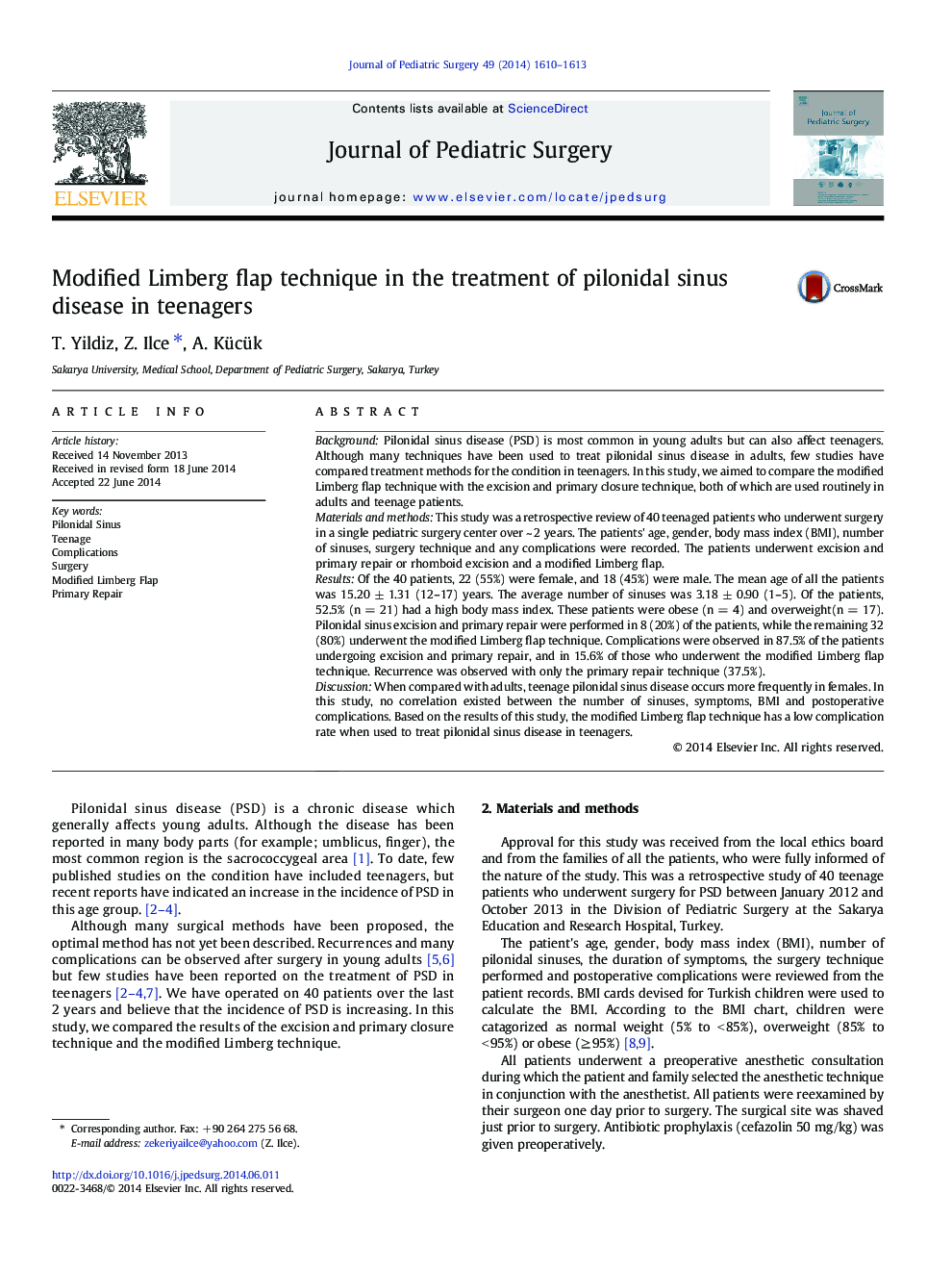| Article ID | Journal | Published Year | Pages | File Type |
|---|---|---|---|---|
| 4155352 | Journal of Pediatric Surgery | 2014 | 4 Pages |
BackgroundPilonidal sinus disease (PSD) is most common in young adults but can also affect teenagers. Although many techniques have been used to treat pilonidal sinus disease in adults, few studies have compared treatment methods for the condition in teenagers. In this study, we aimed to compare the modified Limberg flap technique with the excision and primary closure technique, both of which are used routinely in adults and teenage patients.Materials and methodsThis study was a retrospective review of 40 teenaged patients who underwent surgery in a single pediatric surgery center over ~ 2 years. The patients' age, gender, body mass index (BMI), number of sinuses, surgery technique and any complications were recorded. The patients underwent excision and primary repair or rhomboid excision and a modified Limberg flap.ResultsOf the 40 patients, 22 (55%) were female, and 18 (45%) were male. The mean age of all the patients was 15.20 ± 1.31 (12–17) years. The average number of sinuses was 3.18 ± 0.90 (1–5). Of the patients, 52.5% (n = 21) had a high body mass index. These patients were obese (n = 4) and overweight(n = 17). Pilonidal sinus excision and primary repair were performed in 8 (20%) of the patients, while the remaining 32 (80%) underwent the modified Limberg flap technique. Complications were observed in 87.5% of the patients undergoing excision and primary repair, and in 15.6% of those who underwent the modified Limberg flap technique. Recurrence was observed with only the primary repair technique (37.5%).DiscussionWhen compared with adults, teenage pilonidal sinus disease occurs more frequently in females. In this study, no correlation existed between the number of sinuses, symptoms, BMI and postoperative complications. Based on the results of this study, the modified Limberg flap technique has a low complication rate when used to treat pilonidal sinus disease in teenagers.
